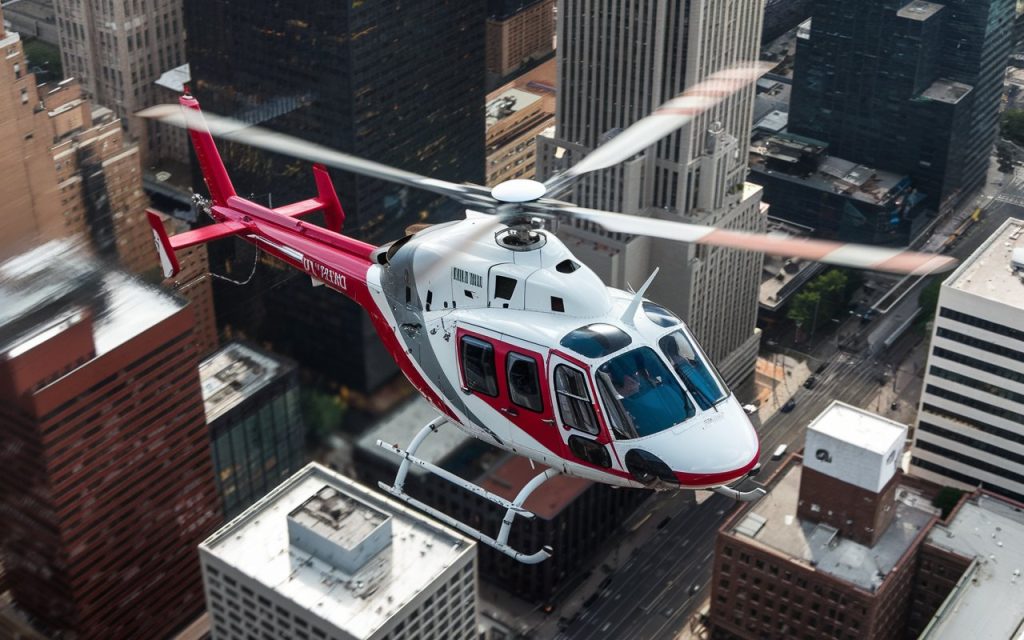Table of Contents
Helicopters are fascinating machines, admired for their ability to fly in all directions, hover in place, and land just about anywhere. But when it comes to speed, many people wonder: How fast does a helicopter go? This article will explore the average speeds, the fastest helicopters, and the factors influencing how quickly these versatile aircraft can move.
What is the Average Speed of a Helicopter?

A helicopter’s average speed depends on its type and purpose. Generally, helicopters travel between 140 and 160 miles per hour (mph), the standard speed range for most civilian helicopters for transportation, search and rescue, or medical emergencies.
Different Types of Helicopters and Their Speeds
- Civilian Helicopters: The average civilian helicopter flies around 150 mph. These helicopters are used for transporting people and cargo or as air ambulances.
- Military Helicopters: Military helicopters, built for strength and power, tend to be a bit faster, ranging from 160 to 220 mph. This extra speed is helpful for combat and defense missions.
- Luxury Helicopters: Designed for comfort, luxury helicopters often fly at around 150 mph. Although they are built for a smoother ride, they still maintain decent speeds.
How Fast is the Fastest Helicopter?
If you’re wondering how fast a helicopter goes when it’s built for pure speed, the current record holder is the Eurocopter X2. This helicopter can reach an astonishing speed of 293 mph. Its advanced technology and design have made it the fastest helicopter in the world, far surpassing the average speeds of regular helicopters.
The Sikorsky X2 is another high-speed helicopter known for reaching 290 mph. It uses advanced rotor technology to achieve such incredible speeds. These helicopters showcase cutting-edge advancements in helicopter engineering, pushing the limits of what these machines can do.
Factors That Influence a Helicopter’s Speed
Several factors determine a helicopter’s speed. Let’s break them down to understand what affects it.
- Rotor Design
The design of the helicopter’s rotor blades plays a significant role in its speed. Longer or more advanced rotor blades allow helicopters to travel faster by creating more lift and reducing drag. This aerodynamic improvement allows helicopters with innovative rotor designs, like the Sikorsky X2, to reach impressive speeds.
- Weight of the Helicopter
Like any vehicle, weight affects how fast a helicopter can travel. A heavier helicopter will require more power to achieve high speeds. On the other hand, a lighter helicopter can move quicker and more efficiently. This is why high-speed helicopters are often designed with lightweight materials to increase their overall speed.
- Engine Power
The strength of a helicopter’s engine is one of the most critical factors in determining its speed. Helicopters with more powerful engines can fly faster and climb higher. For example, military helicopters with powerful engines can reach speeds over 200 mph.
- Weather Conditions
Wind and weather can significantly impact a helicopter’s speed. While helicopters are built to withstand various weather conditions, strong headwinds can slow them down. Conversely, flying with the wind can boost a helicopter’s speed. Pilots must always consider weather conditions to ensure the aircraft operates efficiently and safely.
How fast does a helicopter go? How Helicopters Compare to Other Aircraft
While helicopters are impressive machines, they are generally slower than airplanes. Commercial airplanes, for instance, travel at speeds of around 500 mph, much faster than the typical 150 mph helicopter. However, helicopters are not built for speed alone—they are designed for versatility. How fast does a helicopter go? Their ability to take off and land vertically, hover in one spot, and access remote areas gives them an edge over airplanes in specific situations.
Helicopter Speed in Real-Life Applications

How fast does a helicopter go? When we ask this question, we must consider the context. Helicopters are used in many industries, and their speed plays a vital role.
- Medical Emergencies
Speed is critical in emergency situations. Medical helicopters, often air ambulances, can quickly reach accident scenes and transport patients to hospitals. These helicopters typically fly around 150 mph, allowing them to respond swiftly to life-threatening situations.
- Rescue Missions
Helicopters used in search and rescue missions must balance speed and precision. While speed is essential to reach people in danger quickly, helicopters also need the ability to hover and navigate rugged terrain. In these cases, helicopters may not always fly at their maximum speeds but instead focus on maneuverability.
- Military Operations
Speed is crucial in military operations, particularly for transport and combat missions. Military helicopters are designed for rapid response and can fly at 160 to 220 mph speeds. Their quick movement helps transport troops and equipment to engage in combat when necessary.
Can Helicopters Fly at Supersonic Speeds?
How fast does a helicopter go? Many wonder if helicopters can break the sound barrier when talking about speed. While modern helicopters have made significant advancements in speed, none are currently capable of flying at supersonic speeds, which is about 767 mph. Helicopters are designed differently from jets, focusing more on maneuverability and vertical takeoff than breaking speed records. However, engineers continue to push the limits, and faster helicopters are being developed yearly.
Also read: Can you sleep in your car in California? Uncover exciting benefits!
In summary, helicopters can travel at various speeds, depending on their type, purpose, and design. The average helicopter flies at about 140 to 160 mph, but some high-speed models, like the Eurocopter X2, can reach nearly 300 mph. Factors such as rotor design, weight, engine power, and weather conditions all play a role in determining how fast a helicopter can go.




